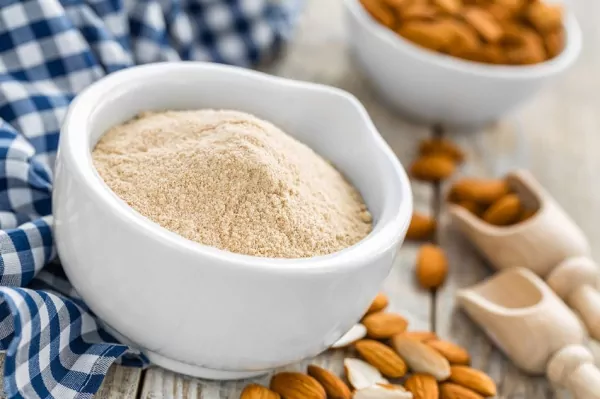5 Insanely Great Benefits of Almond Flour
When most of us hear the word ‘flour’ we typically associate it with wheat. Today, there are many healthier alternatives to wheat flour, though. Almond flour isn’t the healthiest alternative since it has some negative aspects, yet it’s healthy, moist and tasty. There are blanched and unblanched almond flours. The blanched almond flour is much healthier and better than unblanched one, which is why don’t just grab the first almond flour you see but read the label carefully.
The blanched almond flour is low in carbohydrates and sugars, high in fiber and protein, and is gluten-free. It’s also an excellent source of iron, magnesium, riboflavin, potassium, vitamin E and calcium. Whether you’re on a diet, or you’re trying to develop healthy eating habits, you may want to include almond flour in your meal plan. Here’s why:
1 It’s gluten-free
Unlike other types of flours, almond flour is good for people with gluten sensitivity and those watching their glycemic index. I have been cooking and baking with blanched almond flour for over five years and love this healthy alternative to wheat flour. Blanched almond flour varies from brand to brand, so there’s always the difference between almond flours. I’ve tried many brands and recommend you to do your own research to find the best gluten-free almond flour for you.
2 It has a high macronutrient content
Quinoa and coconut flours are healthy and somehow delicious, but blanched almond flour is something that many dieters should try. The blanched almond flour has an incredibly rich macronutrient content. It’s the perfect source of carbs, protein and fat. 1/4-cup serving of blanched almond flour provides around 4.6 grams of carbs, 5.2 grams of protein and 3 grams of polyunsaturated fats. Carbs are primary energy source for the brain. Protein plays a crucial role in healthy cell growth. Polyunsaturated fats provide omega-3 and omega-6 fatty acids that are good for your heart and brain, and can help prevent blood clots.
Read also – 8 Most Delicious Protein-Packed Snacks
3 It’s fortified with vitamins and minerals
The blanched almond flour is chock-full of essential vitamins and minerals including Vitamin E, iron, magnesium, calcium and potassium. Vitamin E is a powerful antioxidant that helps prevent cell damage and lower heart disease and stroke risk. Calcium is essential for the bones and teeth, while potassium helps regulate blood pressure. Of course, it doesn’t mean that all you need to eat is almond flour, but it’s useful to know what you put in your body.
4 It combines well with other healthy ingredients
Almond flour combines unbelievably great with other healthy ingredients such as fruits, vegetables, eggs, coconut milk, canola oil, flax meal, agave, honey, meat, poultry, fish, corn and beans. You can use blanched almond flour in your pancakes, muffins and other baked goods instead of regular wheat flour. Almond flour bread is rather healthy too when made correctly.
5 You can make your own almond flour
I have trouble choosing a healthy almond flour brand so I often make my own one. It doesn’t take a lot of time and effort but this way you know that you use a truly healthy ingredient in your pancakes or muffins. Place blanched almonds into a coffee grinder and process them until you get flour. To blanch raw almonds, put them in a bowl and cover with hot water. Leave for a minute. Place them in a strainer and rinse with cold water. Let your blanched almonds dry and create a flour.
Read also – 8 Healthy and Delicious Types of Bread for Weight Loss
Known as almond meal, almond flour may be a good addition to your pantry. It’s perfect for cooking and baking. Almond flour is readily available, highly nutritious, easy to use and amazingly delicious. Some brands are relatively expensive, but it’s worth the cost. Plus, you can make your own almond flour – it takes a few minutes only. If you use any other type of flour, let me know about it in the comment section. I will try and test it and share my experiences with you too.
